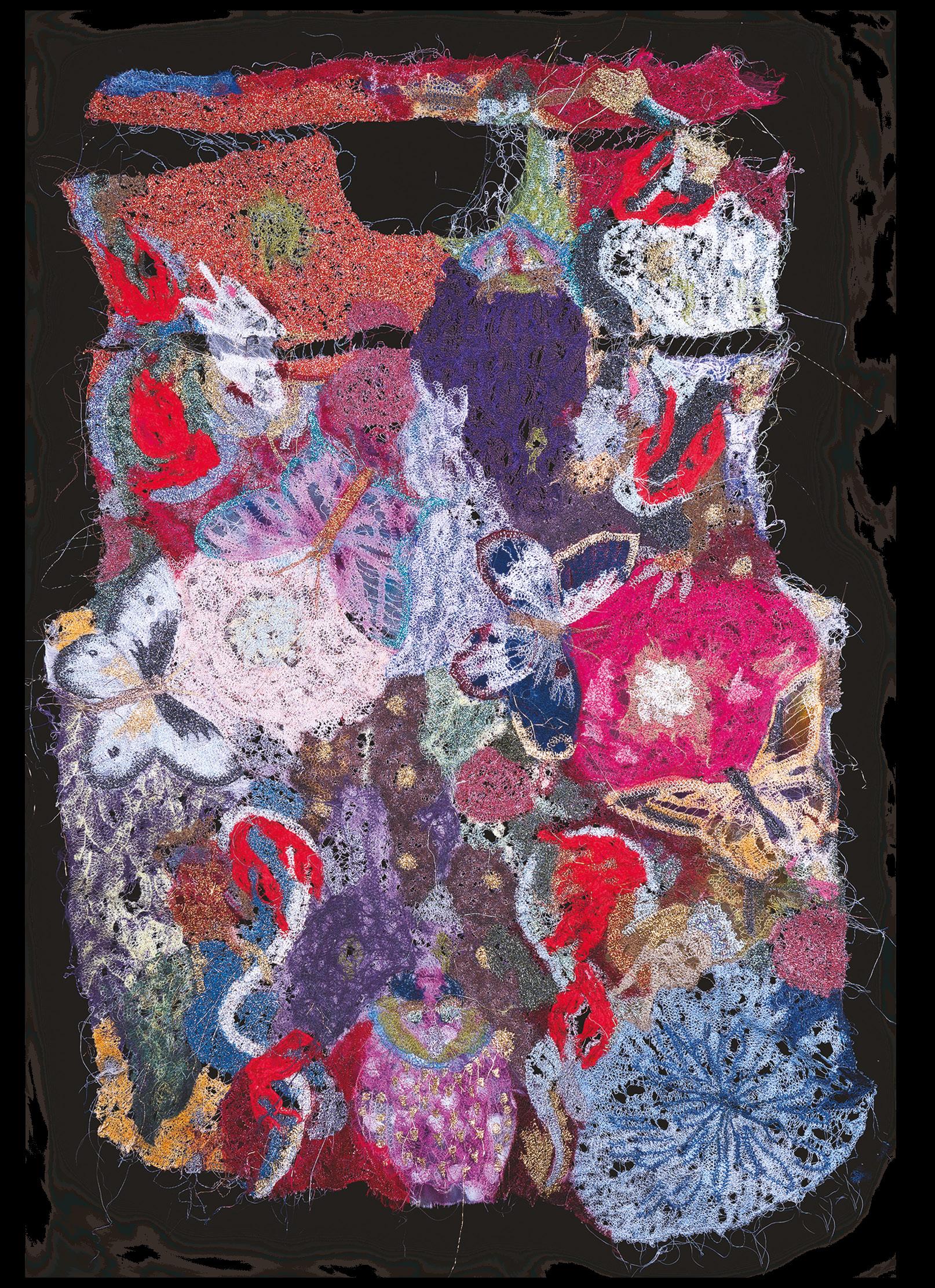
1 minute read
AOMI KIKUCHI
“Leftover 2021”
Silk Gauze, Goose Down, Hair Extension 22"x16"x 4"
Advertisement


“Bosom Lutos”
Mohair Yarn, Bra Pad, 5”x16” “Love for All Things Shirt Yoke/Collar/Back” Fiber Scraps, 30"x22"
“I make sculptures, wall pieces, and garments using textiles and found objects to explore Japanese aesthetics and the philosophy of Buddha. They are 'Wabi-Sabi,' the beauty found in imperfections, and 'Mono-no-aware,' the feeling of sympathy for changing or perishing phenomena or substances. Closely related to the philosophy of Buddha, these can be summarized in three keywords: impermanence, insubstantiality, and suffering.
My work addresses infinity as the succession of fleeting and brittle activities. With freedom and flexibility, I combine acquired knowledge and experiment and create art to inspire dialogue and reflection on these concepts through materials and aesthetic philosophies. I actively use scraps that come from both my working practice and the environment around me."










